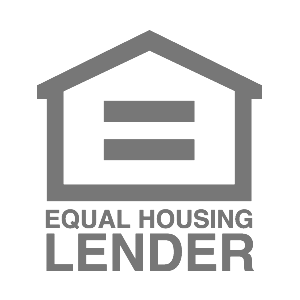
For many Americans, tax season means facing an unpleasant reality – how to pay taxes you can’t cover in full. If you’re in this situation, you may be wondering if you should use a personal loan to pay taxes. But does taking on new debt truly make financial sense?
Read on to explore the pros and cons of using a loan to pay taxes and whether there are alternatives to help you pay what you owe Uncle Sam without piling on extra costs.

Get the cash you need with a low-interest personal loan today
In This Article
Can you use a personal loan for taxes?
Yes, you can use a personal loan to pay off your tax debt. When you take out a personal loan, the funds get deposited directly into your bank account. From there, you have the flexibility to use the money however you need—and one way is by paying off debt owed to the IRS.
Whether you owe individual income taxes, business taxes or another tax type, a personal loan gives you the funds in hand to resolve your tax burden in one fell swoop.
Just be sure the loan amount you apply for will fully cover your outstanding tax balance, including any penalties or interest that has accrued on top of the original amount due.
Advantages and disadvantages of taking out a personal loan to pay your taxes
No one looks forward to tax season if they owe the IRS money. Taking out a personal loan to pay your tax debt may be a good idea if you qualify for a low interest rate. But it’s also got some clear drawbacks that prevent it from being the best choice for every tax situation.
Advantages
1. Allows you to pay your tax bill in full
One major advantage is that a personal loan provides you with a lump sum to pay off your entire tax liability at once. This prevents you from accumulating further penalties and interest charges from the IRS. Dealing with your tax debt promptly through a personal loan also spares you from potential wage garnishment or levy actions by the IRS down the road.
2. Quick application and approval process
Personal loans generally have simple qualification requirements compared to other types of financing. As long as you have decent credit and income sufficient to take on the monthly payments, you can often qualify for a personal loan approval within days. This swift funding allows you to pay what you owe to the IRS without delay.
3. Can help you avoid dipping into savings
Taking out a personal loan to pay your tax debt keeps your other savings intact. If you used an emergency fund or retirement account to pay taxes, that money would no longer be available if unforeseen expenses popped up later. A personal loan allows you to address the tax issue without touching other important financial accounts.
Disadvantages
1. Interest charges can add up
Interest charges are the biggest disadvantage of using a personal loan to pay taxes. For example, the average APR on a personal loan was 12.35% as of Jan. 8, 2024.
Personal loan rates depend on several factors, such as the credit score of the borrower, the lender’s policies and the borrower’s financial stability.
2. It adds more debt to your plate
Taking on a new personal loan while owing taxes may worsen your debt-to-income ratio. A higher debt load could make it more difficult to qualify for new credit cards, a mortgage, or an auto loan. A personal loan will also add a hard inquiry to your credit report.
3. There may be fees
Personal loans may charge upfront fees on top of ongoing interest. Origination, late, and prepayment fees can add substantially to the expense of resolving your tax debt through a personal loan. You’ll need a low-cost loan to outweigh these additional charges.
What happens if you can’t pay your taxes?
Failure to pay your taxes has serious legal ramifications. The IRS will work with taxpayers in financial hardship through a short-term or long-term payment plan.
But if you don’t work with the IRS to resolve an unpaid tax debt, enforcement actions will begin. This includes adding penalties and interest charges to your balance owed each month.
If the debt remains unaddressed, the IRS can garnish your wages, seize bank accounts and assets, and even file a tax lien against your property. Your wages may be garnished by up to 15% until your tax debt is paid off. In some cases, you may not be able to request or renew a passport until the debt is settled.
The IRS will take any tax refunds you’re set to receive in the future and apply them to your debt. A tax debt that lingers can also negatively impact your ability to obtain loans.
Alternatives to using a personal loan for your tax bill
Nonpayment is the most expensive and harmful way to handle your tax situation. Your best option is to take on a personal loan or explore alternatives before penalties and interest accrue further.
Here are some alternative ways to settle your tax debt:
Set up an IRS payment plan for taxes
Working directly with the IRS to set up a payment plan avoids third-party financing costs. The IRS offers short-term payment plans lasting up to 180 days if you can pay your tax debt within one year. Or you may qualify for a longer-term installment agreement stretching payments over multiple years.
These IRS plans sometimes have one-time setup fees, although waivers are available to those who qualify. You may also pay a processing fee if you make your monthly payment with a card instead of your bank account.
Use a HELOC or HELOan
If you have equity in your property, another alternative is getting a home equity line of credit (HELOC) or home equity loan (HELoan). Interest rates on HELOCs can be lower than personal loans since the loan is secured by your home. Just be sure not to withdraw more than needed and commit to paying off this debt quickly.
Apply for a 0% intro APR balance transfer credit card
You could also consider using a 0% intro APR balance transfer credit card to your advantage if eligible. You’ll often pay a balance transfer fee of 3% to 5% of the amount transferred.
Look for cards offering 15 months or longer of no interest to give yourself time to pay off a tax bill without accruing monthly charges. If you go this route, carefully consider if you can pay in full before the 0% period expires to avoid high-interest charges.
How to weigh your options when facing tax debt
Americans owe the IRS more than $688 billion in unpaid tax debt, according to the most recent data. While a personal loan provides quick access to funds, high interest charges could cost you more over time than lower-cost options.
Be sure to carefully weigh the costs and risks of taking on new personal loan debt versus keeping existing tax debt on your records.

Get the cash you need with a low-interest personal loan today
A tax professional can also help evaluate your situation and recommend the most cost-effective strategy, whether it’s a personal loan to pay taxes, an IRS payment plan, or another avenue.
Written by Cassidy Horton
Cassidy Horton is a finance writer who’s passionate about helping people find financial freedom. With an MBA and a bachelor’s in public relations, her work has been published over a thousand times online by finance brands like Forbes Advisor, The Balance, PayPal, and more. Cassidy is also the founder of Money Hungry Freelancers, a platform that helps freelancers ditch their financial stress.
All personal loans made by WebBank.
Eligibility for a home equity loan or HELOC up to the maximum amount shown depends on the information provided in the home equity application. Depending on the lender, loans above $250,000 may require an in-home appraisal and title insurance. Depending on the lender, HELOC borrowers must take an initial draw of the greater of $50,000 or 50% of the total line amount at closing, except in Texas, where the minimum initial draw at closing is $60,000; subsequent HELOC draws are prohibited during the first 90 days following closing; after the first 90 days following closing, subsequent HELOC draws must be $1,000, or more, except in Texas, where the minimum subsequent draw amount is $4,000.
The amount of time it takes to get funds varies. It is measured from the time the lender receives all documents requested from the applicant and depends on the time it takes to verify information provided in the application. The time period calculation to get funds is based on the first 4 months of 2023 loan fundings, assumes the funds are wired, excludes weekends, and excludes the government-mandated disclosure waiting period.
For Texas home equity products through Prosper, funds cannot be used to pay (in part or in full) non-homestead debt at account opening.
Depending on the lender, qualified home equity applicants may borrow up to 80% – 95% of their primary home’s value and up to 80% – 90% of the value of a second home. In Texas, qualified applicants may borrow up to 80% of their home’s value. HELoan applicants may borrow up to 85% of the value of an investment property (not available for HELOCs).
Home equity products through Prosper may not be available in all states.
All home equity products are underwritten and issued by Prosper’s Lending Partners. Please see your agreement for details.
Prosper Marketplace, Inc. NMLS# 111473
Licensing & Disclosures | NMLS Consumer Access
